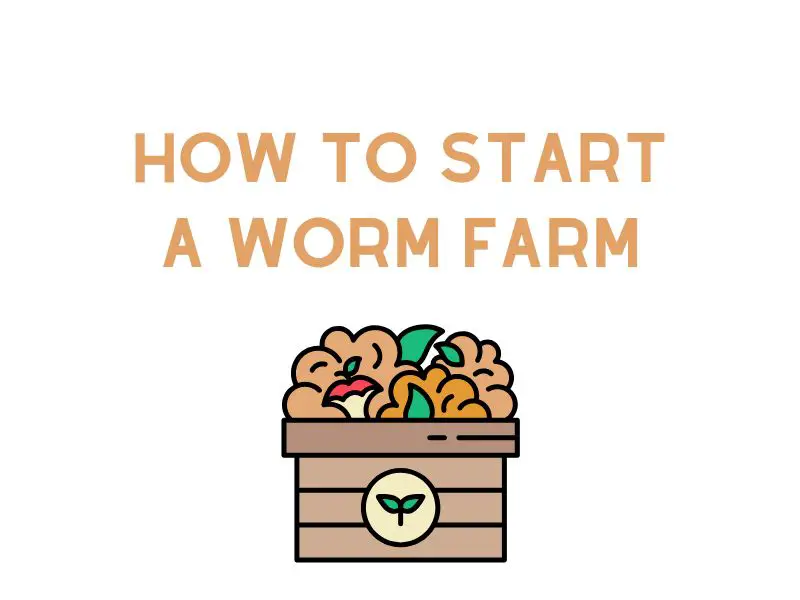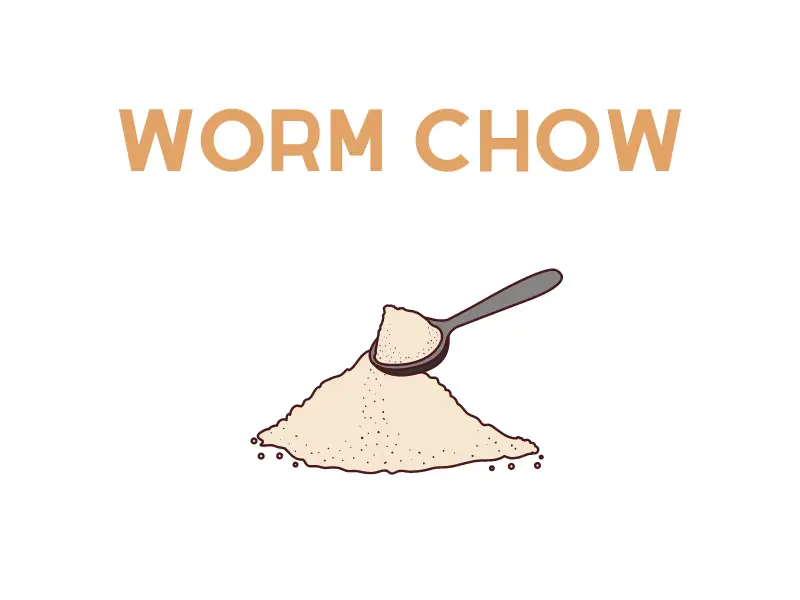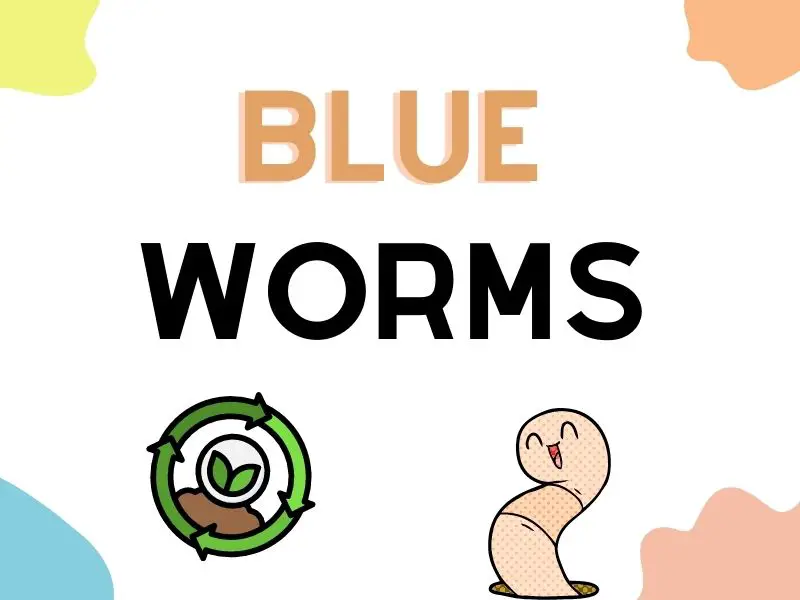If you’re looking for a fun and sustainable way to recycle your food scraps, consider starting a worm farm! Worms eat organic matter and turn it into nutrient-rich compost, which can be used to fertilize plants. In this blog post, we will discuss everything you need to know about starting a worm farm, from choosing the right worms to setting up your bin. We’ll also talk about how to start a worm farm, how to sell your worms, and what kind of profits you can expect. So read on for all the information you need to get started!
What is a Worm Farm
In order to start a worm farm, it is important to understand what a worm farm is. A worm farm is an artificial environment created to house and breed worms. Worms are then used for various purposes such as fishing bait, composting, or even as pets.
Worm farms can be small enough to fit on a kitchen countertop or large enough to fill a garage. They can be made out of recycled materials or purchased new. No matter the size or cost of your worm farm, the goal is always the same: to provide a safe and healthy environment for your worms.
Benefits of Having a Worm Farm
There are many benefits to starting a worm farm. Worms aerate the soil as they burrow through it, making it healthier for plants. They also help break down organic matter, such as food scraps and leaves, into rich compost. This compost can be used to fertilize gardens or potted plants.
Worm farms are low-maintenance, meaning they do not require a lot of time or effort to keep them running smoothly. Worms are self-sufficient creatures and will reproduce on their own if the conditions on their farm are ideal.
Another benefit of worm farming is that it is a sustainable practice. Worms consume very little resources and produce very little waste. Their diet consists mainly of organic matter that would otherwise end up in a landfill. By starting a worm farm, you can help reduce your carbon footprint and do your part in protecting the environment.
How Does a Worm Farm Make Money And How Much
Worm farms can make money in a few different ways. The most common is to sell the worms themselves. Worms can be used for fishing bait, pet food, or as compost for gardens and farms. They are also sometimes used in scientific research. Another way worm farms make money is by selling the castings that the worms produce. Castings are rich in nutrients and can be used as an organic fertilizer for plants and crops.
They can also be sold as potting soil or added to existing soils to improve drainage and aeration. Finally, some worm farmers sell the vermicompost tea that is produced when water is added to worm castings. This tea is full of beneficial bacteria and fungi that can help promote plant growth. Worm farms can be a fun and rewarding way to make some extra money. With a little bit of planning and effort, you can be up and running in no time.
How much money you can earn? That really depends on how big your operation is and what products you’re selling. If you’re selling worms, you can expect to make around $0.50 per pound. If you’re selling vermicompost, you can charge anywhere from $0.50 to $15 per cubic foot, depending on the quality of your product. And if you’re selling vermicompost tea, you can charge anywhere from $0.25 to $0.50 per gallon. Of course, these are just rough estimates – it’s ultimately up to you to set your own prices based on the demand for your product and the competition in your area.
Who Buys Worms And Worm Products
There are a number of different markets for worms and worm products. Many gardeners and farmers are interested in using vermicompost as a natural fertilizer for their plants. Others use worm castings to improve the drainage and aeration of their soil. And still, others buy vermicompost tea to water their plants with, as it is full of beneficial bacteria and fungi. If you live near a large city, there may also be a market for selling worms to bait shops or fishing stores. Whatever market you choose to target, make sure that there is a demand for your product before getting started.
One way to sell your worms and worm products is to set up a booth at a local farmer’s market or gardening show. You can also sell online through a website or blog. If you choose to sell locally, make sure that you are allowed to do so at the farmer’s market or gardening show before setting up your booth. Many times, there are rules and regulations that must be followed in order to sell at these types of events.
Another option for selling your worms and worm products is to contact local nurseries, garden centers, and landscapers. Many of these businesses are always in need of quality worm castings and vermicompost for their customers. You can also contact local schools and universities to see if they would be interested in purchasing worms for use in their science classrooms. Some farmers may also be interested in buying worms from you to use on their farms. By doing your research and reaching out to potential customers, you should be able to find a market for your worms and worm products.
How to Get Started A Worm Farm
If you’re interested in starting a worm farm, there are a few things you’ll need to do to get started. First, you’ll need to choose the type of worms you want to raise. There are many different types of worms available, each with its own unique benefits. Once you’ve chosen your worms, you’ll need to find a suitable location for your farm. This location should have plenty of sunlight and be free from excessive noise and traffic. After finding the perfect location, you’ll need to build or purchase a bin for your worms. This bin will serve as their home and should be large enough to accommodate all of your worms comfortably. Let’s take a closer look at all the steps.
Choose The Type Of Worms You Want To Raise
If you’re thinking about starting a worm farm, the first step is to choose the type of worms you want to raise. The most common type of worms used for vermicomposting is red wigglers, also known as Eisenia fetida. These worms are small, approximately 2-4 inches in length, and have a reddish-brown color. They are easy to care for and reproduce quickly, making them ideal for those new to worm composting.
Additionally, red wigglers are tolerant of a wide range of temperatures, making them well-suited for indoor farming. Another type of worm often used in vermicomposting is the African Nightcrawler. These worms are larger than red wigglers, averaging 8-10 inches in length, and have a dark brown or black coloration. They are less common than red wigglers but are still relatively easy to care for. African nightcrawlers are also able to tolerate higher temperatures than other types of worms, making them suitable for outdoor farming in warmer climates.
Ultimately, the type of worm you choose will depend on your personal preferences and environmental conditions.
Find a Suitable Location For Your Worm Farm
Your worm farm can be located indoors or outdoors, depending on the climate and space you have available. If you live in a hot climate, it is best to locate your worm farm in a shady spot outdoors to keep the worms cool. If you live in a cold climate, you can keep your worm farm indoors near a window where it will get some natural sunlight.
You will also need to choose a location for your worm farm that is out of the way of foot traffic and other animals. You don’t want anyone accidentally stepping on your worms! A garage, basement, or shed are all good choices for locating your worm farm.
Buy Or Build Your Own Worm Bin
Once you have chosen the perfect location for your worm farm, it’s time to decide whether to buy a pre-made worm bin or build your own. If you are handy and want to save some money, you can easily build your own worm bin using a plastic storage container or an old dresser drawer. Simply drill some holes in the bottom of the container for drainage and add some moistened newspaper for bedding. Voila! You have created your very own worm bin.
If you would prefer to purchase a ready-made worm bin, there are many options available online and at garden supply stores. Choose a bin that is made of durable plastic and has multiple ventilation holes. This will ensure that your worms have plenty of air and that the bin does not become too wet or humid.
Other Necessary Equipment
In addition to a worm bin, you will need some other basic supplies in order to get your worm farm up and running. These include:
- A spade or shovel for digging up earthworms
- A garden hose for watering your worm bin
- A spray bottle for misting the bedding if it becomes too dry
Fill The Worm Bin With Bedding
The next step is to fill your worm bin with bedding. This can be done by layering moistened newspaper, shredded cardboard, or coconut coir. The bedding should be moist but not wet, and it should be loosely packed so that the worms have plenty of air to breathe.
Once the bin is filled with bedding, add a layer of compost or food scraps on top. This will give the worms something to eat when they are first added to the bin. Be sure to chop up any large pieces of food so that the worms can easily digest them.
Add Worms to the Bin
Now it’s time to add the worms to the bin! You can purchase worms from a local bait shop or online. If you are collecting them from your compost pile, be sure to wash them off first so that they don’t bring any unwanted pests into the bin.
Once you have your worms, simply add them to the bedding and give them a few days to adjust to their new home. After a week or so, you can start feeding them small amounts of food scraps.
Create a Feeding Schedule For Your New Worm Farm
Worms can eat their weight in food scraps every day, so it’s important to create a feeding schedule that works for you. A good rule of thumb is to start by feeding them half a pound of food per week. You can increase this amount as needed.
To keep track of how much your worms are eating, we recommend weighing the food scraps before adding them to the bin. This will help you gauge how much they are eating and how often you need to feed them.
Harvesting Your Worms
Worms reproduce quickly, so it’s important to harvest them regularly to prevent overcrowding. We recommend harvesting every three to six months.
To harvest your worms, simply remove them from the bin and place them in a new bin with fresh bedding material. You can then sell the worms or use them for composting.
If you’re selling your worms, we recommend packaging them in small bags or containers. This will make it easier for customers to transport them home.
Selling Your Worms, Worm Castings, And Vermicompost Tea
There are a few different ways to sell your worms and worm products. You can sell them online, at farmers’ markets, or through local retailers.
If you’re selling online, we recommend setting up a website or using an existing marketplace such as eBay. This will give you the ability to reach a wider audience and sell your worms from the comfort of your own home.
Selling at farmers’ markets is a great way to meet potential customers and build relationships with other vendors. It’s also a great way to get feedback about your products.
Local retailers are another option for selling your worms and worm products. This could include garden stores, pet stores, or even some grocery stores.
Before you start selling your worms, it’s important to do some research and find out what the going prices are for worms and worm products. This will help you price your products competitively and ensure that you’re making a profit.
Once you’ve decided how and where you’re going to sell your worms, it’s time to get started! Make sure you have a good supply of worms on hand, as well as some quality worm food. Then, start promoting your business and selling your product!
To Sum Up
Starting a worm farm is a great way to get into the agriculture business. By following the steps outlined in this article, you can get your farm up and running in no time! With a little hard work and dedication, you can soon be selling worms and worm products to customers all over the country!
Are there any other tips you would add on how to start a worm farm? Let us know in the comments below!
FAQs About Worm Farming
Can you make a living in worm farming?
Yes, you can make a living in worm farming. However, it takes a lot of hard work and dedication to be successful. There are many different factors that will affect how much money you can make, such as the size of your operation and the demand for your product.
How many worms do I need to start a worm farm?
There is no set number of worms that you need to start a worm farm. However, it is important to note that the more worms you have, the more money you can potentially make.
How much space do I need for a worm farm?
The amount of space you need for a worm farm will depend on the size of your operation. A small operation can be run in a garage or shed, while a larger operation may require an acre or more of land.
Do worm farms smell?
Worm farms do not typically smell if they are managed properly. However, if the farm is not managed properly, it can produce a foul odor.
To avoid this, be sure to keep the farm clean and dry, and to aerate the bedding regularly.
Do worm farms attract rodents?
Worm farms can attract rodents if they are not managed properly. To avoid this, be sure to keep the farm clean and dry, and to aerate the bedding regularly.
You should also consider using a rodent-proof container for your worm farm.
Should I water my worm farm?
Worm farms should be kept moist, but not wet. The bedding should be damp, but not soggy. If the bedding is too wet, it can cause the worms to drown.
If the bedding is too dry, the worms will become dormant. To avoid this, be sure to water your worm farm regularly and monitor the moisture level of the bedding.
How cold is too cold for worm farm?
Worms are tolerant of a wide range of temperatures, but they prefer cool, moist conditions. The ideal temperature for a worm farm is between 55 and 77 degrees Fahrenheit.
If the temperature drops below freezing, the worms will become dormant. If the temperature gets too hot, the worms will die.
To avoid this, be sure to monitor the temperature of your worm farm and make adjustments as needed.




